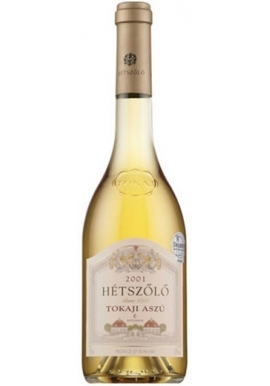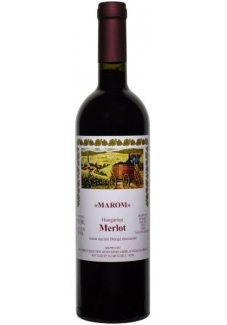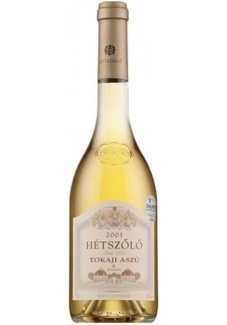Hungarian wine has a history dating back to the Kingdom of Hungary. Outside Hungary, the best-known wines are the white dessert wine Tokaji aszú (particularly in the Czech Republic, Poland, and Slovakia) and the red wine Bull's Blood of Eger (Egri Bikavér).
The official list of wine regions is defined by a ministerial decree. The current list in...
Hungarian wine has a history dating back to the Kingdom of Hungary. Outside Hungary, the best-known wines are the white dessert wine Tokaji aszú (particularly in the Czech Republic, Poland, and Slovakia) and the red wine Bull's Blood of Eger (Egri Bikavér).
The official list of wine regions is defined by a ministerial decree. The current list includes 22 wine regions, which are usually grouped into five to seven larger regions.
Balaton, with sub-regions
Badacsony: volcanic soils, full-bodied whites with considerable acidity. One of the few sources of Kéknyelű grapes.
Balatonboglár: full-bodied whites and reds with moderate acidity.
Balaton-felvidék: volcanic soils, full-bodied whites with considerable acidity.
Balatonfüred-Csopak: terra rossa soils, full-bodied whites with considerable acidity.
Nagy-Somló (or Somló): volcanic soil, full-bodied whites with high acidity. Main varieties are: Olaszrizling, Hárslevelű and Furmint.
Zala: mainly white wines.
The main variety of the region is Olaszrizling.
Duna, with sub-regions
Csongrád,
Hajós-Baja,
Kunság.
Mainly fresh and light wines from lots of varieties.
Grapes in an Upper Hungary vineyard.
Eger, with sub-regions
Bükk: mainly white wines.
Eger: fresh whites from Leányka and Királyleányka, full-bodied whites mainly from Olaszrizling or Chardonnay. Home of the Egri Bikavér (bulls blood of Eger), an elegant red blend, mainly based on Kékfrankos. Good Pinot noirs.
Mátra: elegant and full-bodied whites, grown on volcanic soil. Main varieties are Müller-Thurgau, Olaszrizling and Chardonnay.
Észak-Dunántúl, with sub-regions
Neszmély: fresh and aromatic whites.
Etyek-Buda: fresh white wines, with considerable acidity.
Mór: volcanic soil, full-bodied whites. Main variety: Ezerjó.
Pannonhalma: full-bodied whites.
Sopron: elegant reds (mainly Kékfrankos).
Pannon, with sub-regions
Pécs: mainly whites. Traditional variety: Cirfandli
Szekszárd: full-bodied reds, with a bit of spice. Famous wine: Szekszárdi Bikavér.
Main varieties: Kadarka, Kékfrankos, Cabernet franc, Merlot,Tolna
Villány: robust, full-bodied, spicy reds. Main varieties: Blauer Portugieser, Cabernet Sauvignon, Cabernet Franc, Merlot and occasionally Pinot Noir.
Sopron, with sub-regions
Sopron
Tokaj
The first village level dry Furmint in the Tokaji wine region Hungary's most famous wine region lies in the foothills of the Zemplén Mountains of the far north of the country - in fact the traditional area crosses into the southeast corner of modern Slovakia. The area is notable for its long warm autumns and mists that come in from the River Bodrog, creating perfect conditions for noble rot.
This can contribute towards creating the botrytised ('aszú') grapes for which the region is famous. These are individually picked as late as mid-November into buckets ('puttonyos') and crushed to a paste. Varying amounts of this aszú paste are then added to non-aszú must or wine made from a mix of Furmint, Hárslevelű, Muscat Blanc à Petits Grains, Kövérszőlő or Zéta grapes, and left to ferment. The resulting wine is then aged in relatively small barrels in a labyrinth of cellars in the soft volcanic tuff, on whose walls thick blankets of fungus regulate the humidity.
Given that aszú conditions only happen in perhaps three vintages per decade, a lot of dry Furmint is also produced. Other grapes grown in the area include Hárslevelű, Muscat Blanc, Kövérszőlő and Zéta.
For centuries the main product of the area was the sweet wine, mainly the Botrytised selections. The dry Furmint got into the attention of wine connoisseurs and experts of the world when the Úrágya 2000 single vineyard selection had been introduced by István Szepsy. The wine expressed great minerality, complexity and structure, which has been experienced only in the finest white wines of historic regions like Burgundy or the Mosel before. The aging potential was also promising. In 2003 more producers of Mád village produced single vineyard selected dry Furmint wines with great success.
Mád village with its almost 1200 ha had the opportunity to produce high quality dry Furmint wine in significant quantity as a commune level wine, which can express the unique volcanic terroir of the region, this wine is named after its appellation Mad and produced by István Szepsy Jr. in the Szent Tamás Winery.
Hungarian grape varieties are:
Hárslevelű, Irsai Oliver,Cserszegi fűszeres,Királyleányka,Zenit,Furmint,Juhfark and Kéknyelű
Hungary There are no products in this category
Subcategories
-
Reds
During the Ottoman occupation of Hungary, an ancient variety of grapes was used to make the robust red-wine blend later known as Bikavér (Bull's Blood), after a supposed secret ingredient in the wine that fortified the defenders of Eger in 1552. Hungarian winemakers can produce from the various regions some truly unique styles from the regions such as Sopron: elegant reds (mainly Kékfrankos).Szekszárd: full-bodied reds, with a bit of spice. Famous wine: Szekszárdi Bikavér. Main varieties: Kadarka, Kékfrankos, Cabernet franc, Merlot. Tolna Villány: robust, full-bodied, spicy reds. Main varieties: Blauer Portugieser, Cabernet Sauvignon, Cabernet Franc, Merlot and occasionally Pinot Noir.Sopron, with sub-regions
-
Whites
The Romans brought vines to Pannonia, and by the 5th century AD, there are records of extensive vineyards in what is now Hungary. The Hungarians brought their wine-making knowledge from the East. According to Ibn Rustah, the Hungarian tribes were familiar with wine-making long time before the Hungarian conquest of the Carpathian Basin.
Over the following centuries, new grape varieties were brought in from Italy and France. Most of the production was of white wine in that period.
It was also during the Turkish occupation that the Tokaj region became known for dessert wines, harvested late to encourage noble rot. Tokaji aszú is mentioned in a document of 1571, and it was famously christened by Louis XIV of France (1638-1715) "Vinum Regum, Rex Vinorum" – Wine of Kings, King of Wines.
After the Ottoman Empire ceded Hungary to the Austrians in 1699, the Germanic influence was felt with the introduction of grape varieties such as Blauer Portugieser. That influence also showed in the start in 1730 of the world's first vineyard classification in Tokaj, based on soil, aspect and propensity to noble rot.
Hungarian white wines are mainly fresh and light wines from various wine regions and a come from a variety of styles such as -Bükk which are mainly white wines, Eger: fresh whites from Leányka and Királyleányka, full-bodied whites mainly from Olaszrizling or Chardonnay. Neszmély: fresh and aromatic whites. Etyek-Buda: fresh white wines, with considerable acidity. Mór: volcanic soil, full-bodied whites. Main variety: Ezerjó.
Pannonhalma: full-bodied whites.Pécs: mainly whites and from the famous Tokaj wine region and Tokaji (wine)The main Hungarian grape varieties vary from region to region these consist of - Hárslevelű grapes. There are also several varieties of grape are known to have originated in Hungary. These are:Ezerjó,Hárslevelű,Irsai Oliver,Cserszegi fűszeres,Királyleányka,Zenit, Other varieties of grape that may have originated in Hungary include:Furmint,Juhfark,Kéknyelű
ABN: 11 806 263 393
Liquor Licenses
337 526 06
360 674 16


